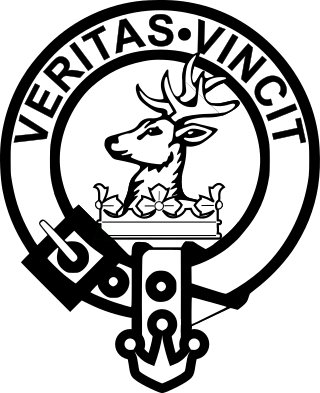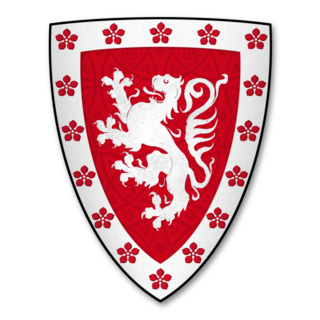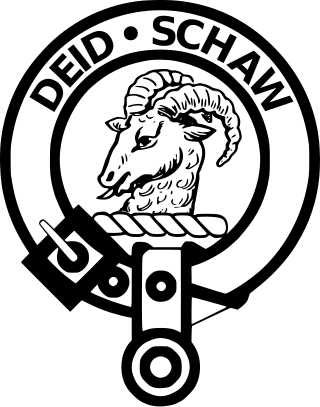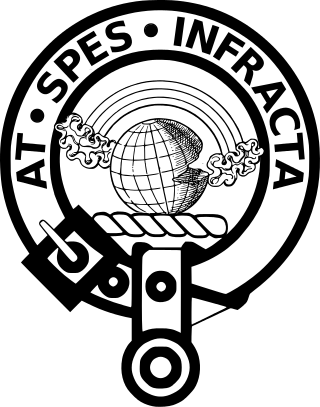
Clan Keith is a Highland and Lowland Scottish clan, whose Chief historically held the hereditary title of Marischal, then Great Marischal, then Earl Marischal of Scotland.

Patrick de Dunbar, 9th Earl of March, was a prominent Scottish magnate during the reigns of Robert the Bruce and David II.

The title Earl of Dunbar, also called Earl of Lothian or Earl of March, was the head of a comital lordship in south-eastern Scotland between the early 12th century and the early 15th century. The first man to use the title of Earl in this earldom was Gospatric II, Earl of Lothian, son of Gospatric, Earl of Northumbria. It descended to George de Dunbar, 11th Earl of March, who was forfeited by parliament of his titles & estates in 1435, and retired into obscurity in England. His son Patrick retained a barony at Kilconquhar in Fife.

Agnes Randolph, Countess of Dunbar and March, known as Black Agnes for her dark complexion, was the wife of Patrick, 9th Earl of Dunbar and March. She is buried in the vault near Mordington House.

Clan Grant is a Highland Scottish clan.
Patrick IV, 8th Earl of Dunbar and Earl of March, sometimes called Patrick de Dunbar "8th" Earl of March, was the most important magnate in the border regions of Scotland. He was one of the Competitors for the Crown of Scotland.
Patrick III, 7th Earl of Dunbar was lord of the feudal barony of Dunbar and its castle, which dominated East Lothian, and the most important military personage in the Scottish Borders.

The Clan Ruthven is a Lowland Scottish clan.

Clan Douglas is an ancient clan or noble house from the Scottish Lowlands.

Clan Houston is a Scottish clan. The clan did not have a chief therefore it was considered an Armigerous clan.

Clan Colquhoun is a Highland Scottish clan.

Clan Carmichael is a Scottish clan and is also considered a sept of the Clan Douglas, Clan MacDougall, Stewart of Appin, and Stewart of Galloway.

Clan Home is a Scottish clan. It held immense power for much of the Middle Ages and dominated the eastern Scottish Borders. It produced no fewer than eight Wardens of the Eastern March – more than any other family.

Clan Johnstone is a Border Reiver Scottish clan.

Clan Oliphant is a Highland Scottish clan.

Clan Haldane is a Lowland Scottish clan.

Clan Hannay is a Lowland Scottish clan.

Clan Hope is a Scottish clan of the Scottish Lowlands.

Clan Maitland is a Lowland Scottish clan.
Patrick I, Earl of Dunbar and lord of Beanley, was a 13th-century Anglo-Scottish noble.



















